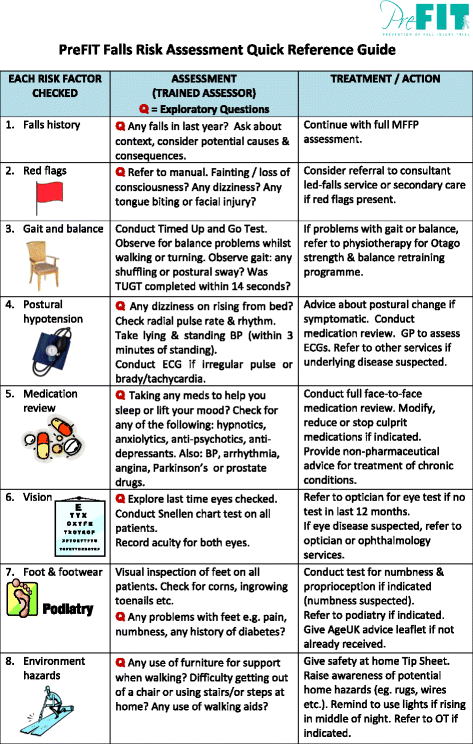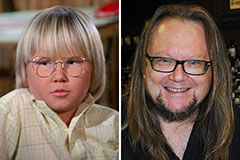Dementia Fall Risk Things To Know Before You Buy
Table of ContentsThe Definitive Guide for Dementia Fall RiskThe Definitive Guide for Dementia Fall Risk8 Simple Techniques For Dementia Fall RiskDementia Fall Risk - An Overview
A fall threat evaluation checks to see exactly how likely it is that you will certainly fall. The assessment generally consists of: This includes a collection of concerns concerning your general health and if you have actually had previous falls or problems with equilibrium, standing, and/or walking.Treatments are referrals that may minimize your threat of falling. STEADI includes 3 steps: you for your threat of falling for your risk aspects that can be boosted to try to avoid drops (for instance, equilibrium problems, impaired vision) to reduce your danger of falling by utilizing reliable strategies (for example, offering education and learning and sources), you may be asked several questions including: Have you dropped in the past year? Are you fretted regarding dropping?
If it takes you 12 seconds or even more, it might indicate you are at higher risk for a fall. This examination checks toughness and balance.
Move one foot midway onward, so the instep is touching the large toe of your various other foot. Relocate one foot totally in front of the various other, so the toes are touching the heel of your various other foot.
Dementia Fall Risk Can Be Fun For Everyone
Many falls take place as an outcome of several contributing factors; for that reason, managing the risk of falling starts with recognizing the elements that contribute to fall danger - Dementia Fall Risk. A few of one of the most pertinent threat factors include: History of prior fallsChronic clinical conditionsAcute illnessImpaired stride and equilibrium, lower extremity weaknessCognitive impairmentChanges in visionCertain high-risk drugs and polypharmacyEnvironmental factors can likewise boost the threat for drops, including: Insufficient lightingUneven or harmed flooringWet or unsafe floorsMissing or harmed handrails and order barsDamaged or poorly equipped devices, such as beds, mobility devices, or walkersImproper use of assistive devicesInadequate supervision of the individuals residing in the NF, consisting of those that display aggressive behaviorsA effective fall risk monitoring program needs a complete professional analysis, with input from all participants of the interdisciplinary team

The care plan need to also include interventions that visit this website are system-based, such as those that advertise a secure setting (proper illumination, hand rails, order bars, and so on). The efficiency of the treatments should be examined occasionally, and the care strategy revised as needed to reflect changes in the loss threat analysis. Executing an autumn risk administration system utilizing evidence-based ideal method can lower the occurrence of drops in the NF, while restricting the potential for fall-related injuries.
Not known Facts About Dementia Fall Risk
The AGS/BGS standard advises screening all adults matured 65 years and older for loss risk annually. This screening includes asking individuals whether they have dropped 2 or even more times in the past year or sought clinical interest for an autumn, or, if they have actually not fallen, whether they really feel unsteady when walking.
Individuals who have dropped once without injury should have their equilibrium and gait examined; those with gait or equilibrium irregularities need to obtain additional evaluation. A history of 1 autumn without injury and without gait or balance problems does not necessitate further analysis beyond continued yearly autumn threat screening. Dementia Fall Risk. An autumn threat analysis is called for as part of the Welcome to Medicare examination

Not known Details About Dementia Fall Risk
Recording a falls background is among the top quality signs for fall avoidance and management. An essential component of risk evaluation is a medicine evaluation. Several courses of drugs raise loss risk (Table 2). Psychoactive medicines particularly are independent forecasters of drops. These medications have a tendency to be sedating, modify the sensorium, and harm balance and stride.
Postural hypotension can commonly be alleviated by reducing the dose of blood pressurelowering drugs and/or quiting medications that have orthostatic hypotension as a negative effects. Use above-the-knee assistance tube and copulating the head of the bed raised may also minimize postural reductions in high blood pressure. The recommended aspects of a fall-focused physical exam anchor are displayed in Box 1.

A Yank time higher than or equal to 12 secs suggests high autumn about his threat. Being unable to stand up from a chair of knee elevation without making use of one's arms suggests enhanced fall threat.
 Romeo Miller Then & Now!
Romeo Miller Then & Now! Charlie Korsmo Then & Now!
Charlie Korsmo Then & Now! Jenna Von Oy Then & Now!
Jenna Von Oy Then & Now! Robbie Rist Then & Now!
Robbie Rist Then & Now! Jeri Ryan Then & Now!
Jeri Ryan Then & Now!